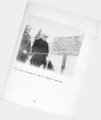| OCR Text |
Show Fair weather avalanches are not too difficult a problem. If a major storm is followed by clear skies and rapidly rising temperatures, a damp sunslide cycle is certain to develop. Its intensity will be governed by the amount of new snow and the temperature itself. Ordinarily, these cycles are only moderately dangerous. The hazard follows a circular path around the area according to the position of the sun with only a limited number of slopes in motion at a time. Here the snow ranger should remember two points. Natural reflectors can produce sunslide temperatures although the thermometer may be below freezing. Skiers on a sunbeaten slope may release a damp slide prematurely, after the normal cycle has passed, or in greater volume than from natural release. The big wot avalanches of spring are a similar problem. At Alta, spring avalanche cycles of dangerous intensity do not start unless temperatures have been above freezing for at least 36 hours. For a large wet avalanche, thawing and resulting water seepage penetrate so that the snow breaks out in depth. Wet avalanches, though enormously powerful, are comparatively slow moving. Their principal threat is to buildings or other fixed objects. Unless caught in one that he started himself, the skier can ordinarily avoid them. Sijace wet avalanches habitually follow the same track year after year, permanent improvements can be located accordingly. As in the case of damp sunslides, the spring avalanche hazard circles the area with the sun. When shadows point at a slope like warning fingers, it is time for the skier to be elsewhere. V. AVALANCHE PROTECTIVE MEASURES Protection from avalanches begins with the planning of an alpine ski area. The location of permanent improvements must be secure, the principal ski slopes must be safe naturally or adaptable to avalanche control. Once an area has been developed, safety becomes a day to day task for the administrator. He discovers it falling into the same general divisions as the hazard, the traffic area, the lift-served ski area, and the touring area. In each of them he uses both active and passive safety procedures. Passive Protection: Passive avalanche protection is based entirely on restrictions. The highway is closed entirely, closed for a few hours, or open for travel under convoy only. In and near the lift-served area there are slopes closed to skiing, most of them temporarily during periods of high hazard, a few, throughout the winter. Many skiers object strenuously to the idea of a permanently closed slope. They reason that no slope is dangerous all the time and that with modern methods of control, any slope can be made safe most of the time. Up to a point, this reasoning is sound. But there are two excellent justifications for closing a known slide path permanently. One is inability to apply control measures, either skiing or explosives. The other is lack of information -1+1+- |








































































































